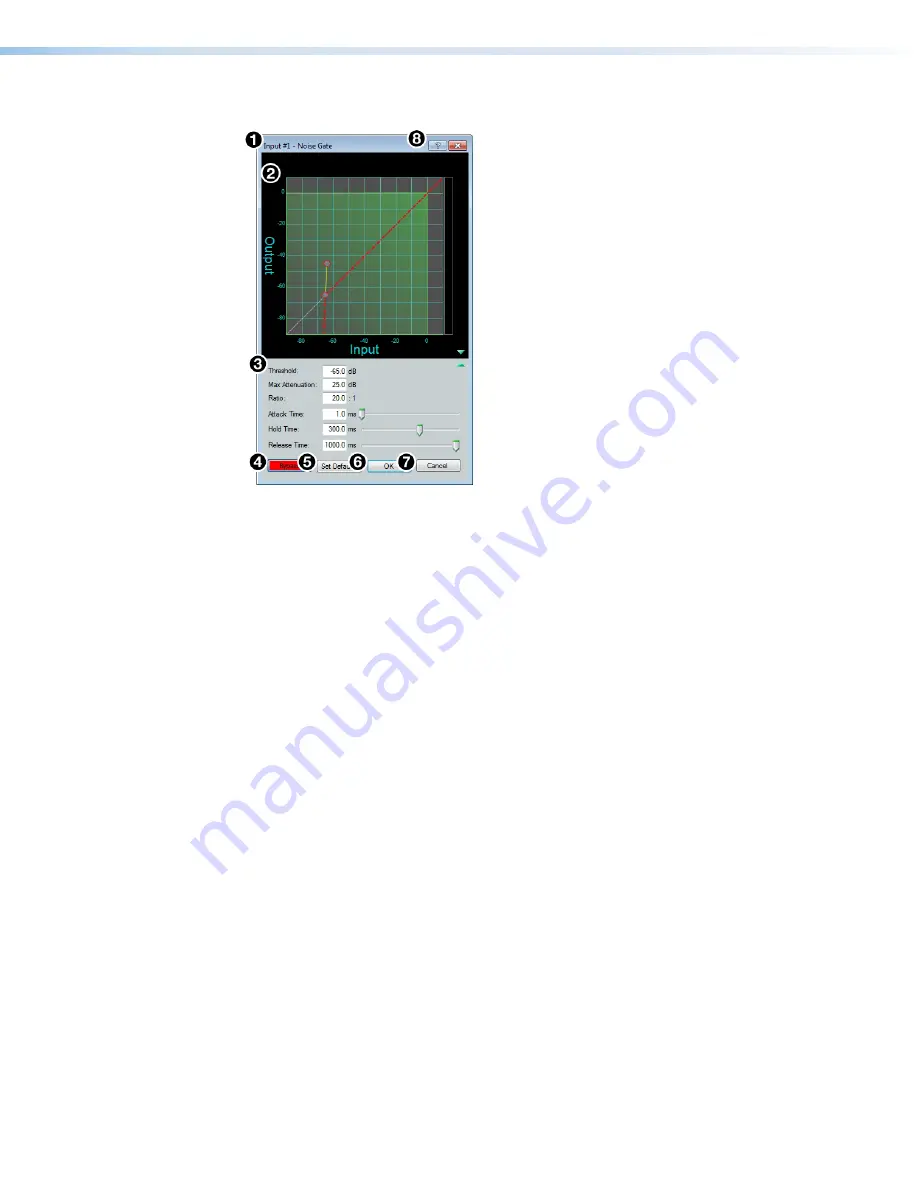
XMP 240 C AT • DSP Configurator Software
34
Noise Gate
Figure 52.
Noise Gate Dialog Box
1
Noise Gate Channel Name
—
This name changes to match the default or user
defined input name.
2
Noise Gate Graph
—
Graphically displays noise gate parameter settings. Parameters
can also be adjusted using this graph. Click and drag the upper dot to adjust
Ratio
.
Click and drag the middle dot to adjust
Threshold
. Click and drag the bottom dot (out of
view at default settings) to adjust
Max Attenuation
.
3
Noise Gate Parameter List and Control
— Lists all configurable parameters
for the noise gate. Text fields are available to adjust
Threshold
,
Max Attenuation
,
Ratio
,
Attack Time
,
Hold Time
, and
Release Time
. Click and drag the sliders to
adjust
Attack Time
,
Hold Time
, and
Release Time
. Click a slider once and use the
<
Left Arrow
> and <
Right Arrow
> keys to adjust the respective parameter in 1 ms
steps.
4
Bypass Button
— Bypasses the noise gate. When the button is red, bypass is
enabled.
5
Set Defaults Button
— Resets all noise gate parameters to their default values. To
view individual parameter default settings, see the
DSP Configurator Help
file by clicking
the
Dynamics Help
button (
8
) and navigate to the
About Dynamics
topic.
6
OK Button
— Confirms changes made to the contained parameters and closes the
Noise Gate
dialog box.
7
Cancel Button
— Reverts any changes made to the contained parameters back to
their states when the current instance of the
Noise Gate
dialog box was opened and
closes the dialog box.
8
Dynamics Help Button
— Opens the
Dynamics Operation
topic of the
DSP Configurator Help
file for further assistance in operating dynamics processors.
1
Noise Gate Channel Name
2
Noise Gate Graph
3
Noise Gate Parameter List and Control
4
Bypass Button
5
Set Defaults Button
6
OK Button
7
Cancel Button
8
Dynamics Help Button
figure 29. Noise Gate Dialog Box






























